Hansol Yoon
Mathematical Models of Human Drivers Using Artificial Risk Fields
May 24, 2022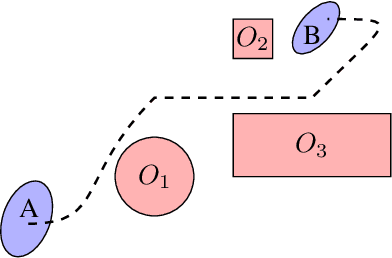

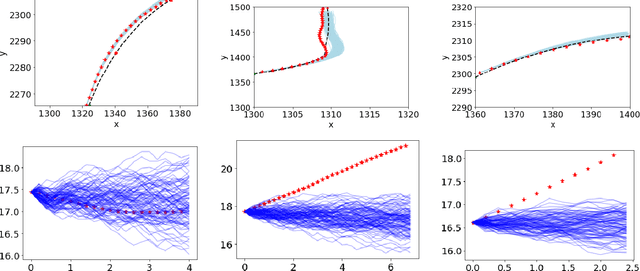
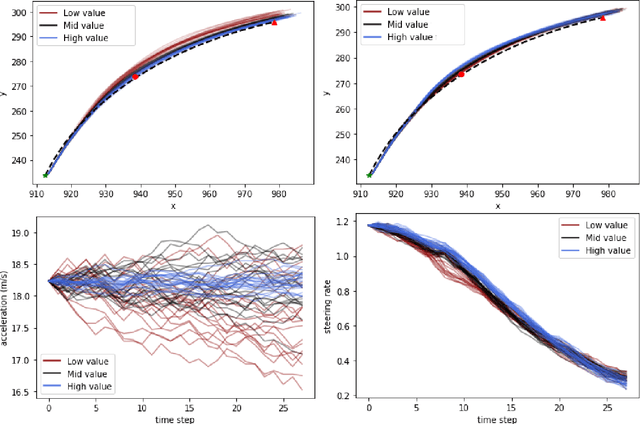
Abstract:In this paper, we use the concept of artificial risk fields to predict how human operators control a vehicle in response to upcoming road situations. A risk field assigns a non-negative risk measure to the state of the system in order to model how close that state is to violating a safety property, such as hitting an obstacle or exiting the road. Using risk fields, we construct a stochastic model of the operator that maps from states to likely actions. We demonstrate our approach on a driving task wherein human subjects are asked to drive a car inside a realistic driving simulator while avoiding obstacles placed on the road. We show that the most likely risk field given the driving data is obtained by solving a convex optimization problem. Next, we apply the inferred risk fields to generate distinct driving behaviors while comparing predicted trajectories against ground truth measurements. We observe that the risk fields are excellent at predicting future trajectory distributions with high prediction accuracy for up to twenty seconds prediction horizons. At the same time, we observe some challenges such as the inability to account for how drivers choose to accelerate/decelerate based on the road conditions.
Predictive Runtime Monitoring for Mobile Robots using Logic-Based Bayesian Intent Inference
Aug 03, 2021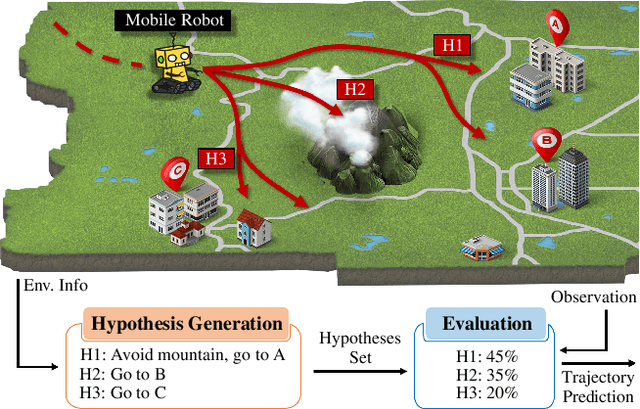
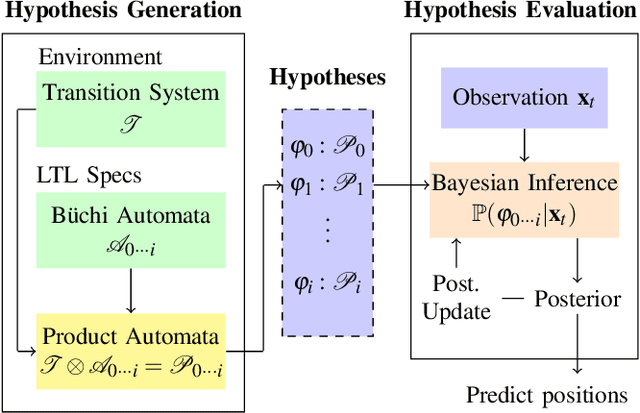
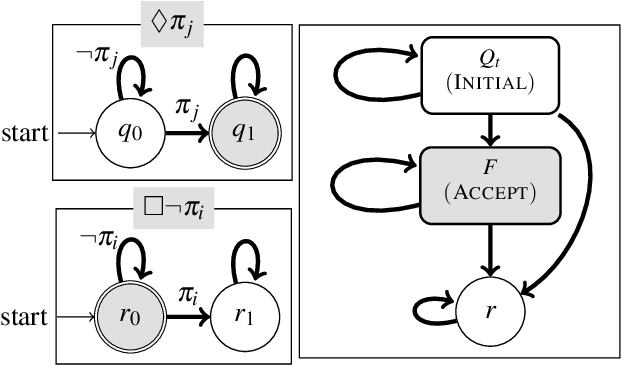

Abstract:We propose a predictive runtime monitoring framework that forecasts the distribution of future positions of mobile robots in order to detect and avoid impending property violations such as collisions with obstacles or other agents. Our approach uses a restricted class of temporal logic formulas to represent the likely intentions of the agents along with a combination of temporal logic-based optimal cost path planning and Bayesian inference to compute the probability of these intents given the current trajectory of the robot. First, we construct a large but finite hypothesis space of possible intents represented as temporal logic formulas whose atomic propositions are derived from a detailed map of the robot's workspace. Next, our approach uses real-time observations of the robot's position to update a distribution over temporal logic formulae that represent its likely intent. This is performed by using a combination of optimal cost path planning and a Boltzmann noisy rationality model. In this manner, we construct a Bayesian approach to evaluating the posterior probability of various hypotheses given the observed states and actions of the robot. Finally, we predict the future position of the robot by drawing posterior predictive samples using a Monte-Carlo method. We evaluate our framework using two different trajectory datasets that contain multiple scenarios implementing various tasks. The results show that our method can predict future positions precisely and efficiently, so that the computation time for generating a prediction is a tiny fraction of the overall time horizon.
 Add to Chrome
Add to Chrome Add to Firefox
Add to Firefox Add to Edge
Add to Edge